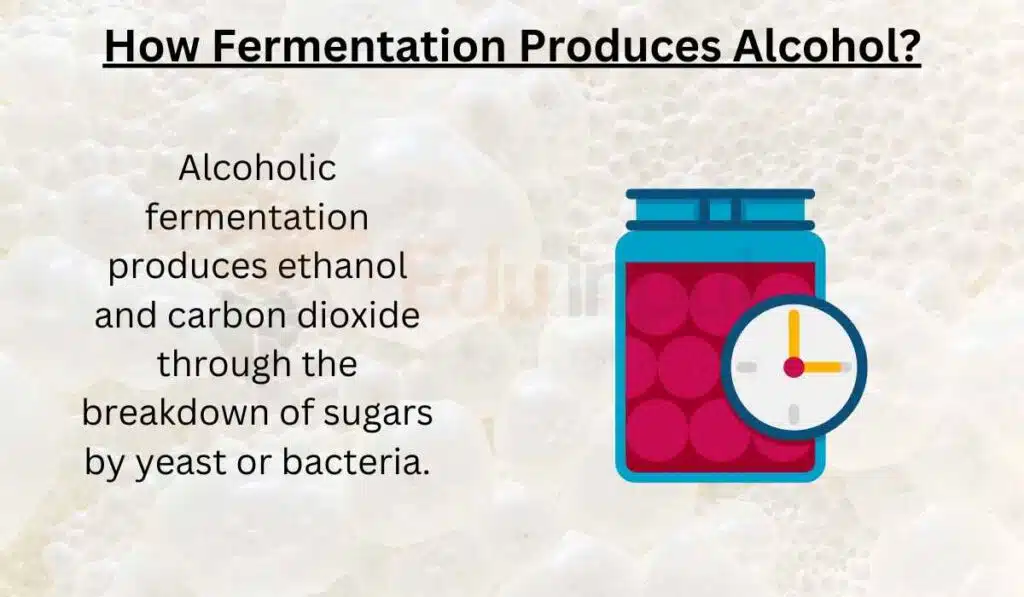How Fermentation Produces Alcohol?
Fermentation produces alcohol by converting sugars into ethanol and carbon dioxide through the action of yeast or bacteria in the absence of oxygen.

How Alcohol Is Made By Fermentation?
Alcohol is made by fermentation, which is a chemical reaction that occurs when yeast or bacteria react with the sugars found in grains, fruits, or vegetables. This reaction produces ethanol, which is the alcohol in the drink, and carbon dioxide, which can make the drink bubbly.
During alcoholic fermentation, yeast breaks down sugars into pyruvate molecules through a process called glycolysis. Glycolysis is a series of chemical reactions that converts glucose into pyruvate. One glucose molecule produces two molecules of pyruvic acid. The pyruvic acid then undergoes a process called alcoholic fermentation, in which it is converted to ethanol and carbon dioxide.
The conversion of pyruvic acid to ethanol occurs in two steps. In the first step, pyruvic acid is converted to acetaldehyde, which is then reduced to ethanol. During this process, the carbon dioxide is released as a byproduct.
Example to Understand How Fermentation Produces Alcohol?
Imagine you want to make beer. You mix water, malted barley, hops, and yeast together. The yeast feeds on the natural sugars in the malted barley, breaking them down through glycolysis. The resulting pyruvic acid undergoes alcoholic fermentation. It is converted into ethanol and carbon dioxide. The ethanol is the alcohol in the beer, while the carbon dioxide creates bubbles and froth.



Leave a Reply